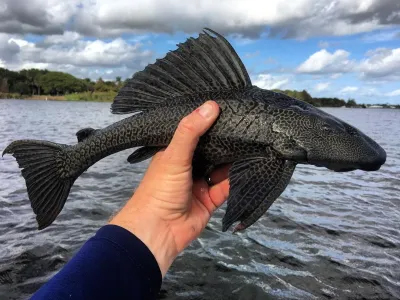Understanding nutrient transport through streamflow and fish populations

The ridge-to-reef (R2R) systems of Hawaiʻi and icefield-to-ocean (I2O) systems of Alaska both harbor high levels of biodiversity, serve as conduits of nutrients to sensitive coastal environments, and are culturally and economically important to local communities. These systems are smaller with distinct geologies and hydrologies compared to more typical river systems and may respond to shifting climatic patterns differently.
Both Hawaiian R2R and Alaskan I2O ecosystems face climate-driven changes in extreme flow events, like floods and droughts, that could dramatically change how nutrients are retained and transported. In this project, a multidisciplinary team will work to evaluate the effect of changes in flow on R2R and I2O watersheds. The project will also evaluate how annual variability in flow conditions impacts the growth and survival of invasive suckermouth armored catfish in Hawaiian streams, and compare/contrast findings to a complementary study linking hydrology to freshwater salmon growth in Southeast Alaska.
This collaboration leverages existing efforts to investigate further the effect of flow regime on fish growth and recruitment. Resource managers working in R2R and I2O systems need flow-ecology information to guide decisions related to habitat restoration, flow management, invasive species control, and fisheries.
PROJECT DETAILS
FUNDED:
FY2020
PI:
Tim Grabowski
Research Fish Biologist, Cooperative Fisheries Unit, USGS
Collaborators:
Yinphan Tsang
Natural Resources and Environmental Management, UH Mānoa
Jeff Falke
Alaska Cooperative Fish and Wildlife, University of Alaska Fairbanks
Ryan Bellmore
Pacific Northwest Research Station, US Forest Service
Jason Fellman
Alaska Coastal Rainforest Center, University of Alaska Southeast

